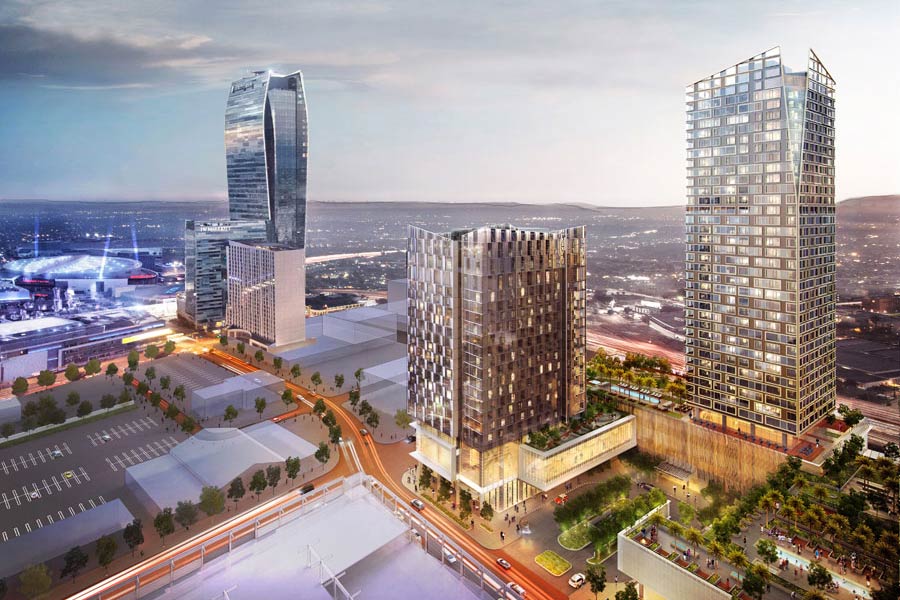
While Los Angeles is not exactly becoming Shanghai, as was suggested in Spike Jones’ recent film Her, the city is without a doubt transforming into a denser, taller city, and the most obvious harbinger of that change is the skyscraper. In Downtown LA there are several in the works, with others planned in almost every corner of the city.
Skyscrapers are not a new phenomenon here. Most of the city’s skyline was developed in the 1970s and 80s, and this postmodern collection is with a few precious exceptions dated and bland; not a model of design ambition or creativity. Unfortunately the new group of high rises is doing little to distinguish itself either. They are relying on gimmicks, tried and true methods, and cautiousness instead of invention and innovation.
The lineup includes Arquitectonica’s 19-story residential tower for Grand Avenue, a bland box decorated with off-center windows that pales in comparison to the world-class architecture around it. Near Pershing Square, KPF’s ambitious Park Fifth, which, among other things, rethought high-rise living by incorporating generous outdoor spaces, has been replaced by Five Oh, a cookie cutter development made up of 24 and seven story buildings that are indistinguishable from similar projects across the country. In South Park, Gensler’s new Metropolis uses visual facade gymnastics to give it visual syncopation and variety; but this masks what is really a very conventional and hastily conceived building. Still, that project is enlightened in comparison to the new hotels going up nearby, which don’t attempt any urban gestures at all.
The vast majority of new tall buildings in the center of Los Angeles are timid and formulaic. While units inside will no doubt be luxurious and check off the needed pro formas, the new skyline they are creating will reflect a city that is not interested in taking architectural chances. And much of what’s going up downtown is not tall at all. Most developers opt for wood framed projects less than seven stories high, despite pleas and legislative efforts from officials like downtown councilman Jose Huizar.
Perhaps the most ambitious new tower is AC Martin’s Wilshire Grand, with its wing-shaped glass and steel facade, outdoor roof gardens, and angled pinnacle, a first for a city bound to flat tops by fire code. Still if you compare this or any of the new towers to some of the newest skyscrapers of Asia, there is no comparison. Many (of course not all) of those towers—with staggering forms, technically sophisticated envelopes, generous public spaces, smart connectivity, inspiring sustainability systems, etc.— are shaping cities that are primed to be the innovation centers of the future.
In some ways it is good that Los Angeles will not look like the Los Angeles in Her, which could be a sterile and isolating place (albeit with excellent walkability and a fantastic mass transit system that we’d be lucky to have). Much of the life and heart of a city is formed at the street level. But it would be nice if our tall architecture had a little more chutzpah and a lot more innovation. If we are not willing to take chances with our largest, most symbolic buildings, it says a lot about the direction our city, and our society, is heading.